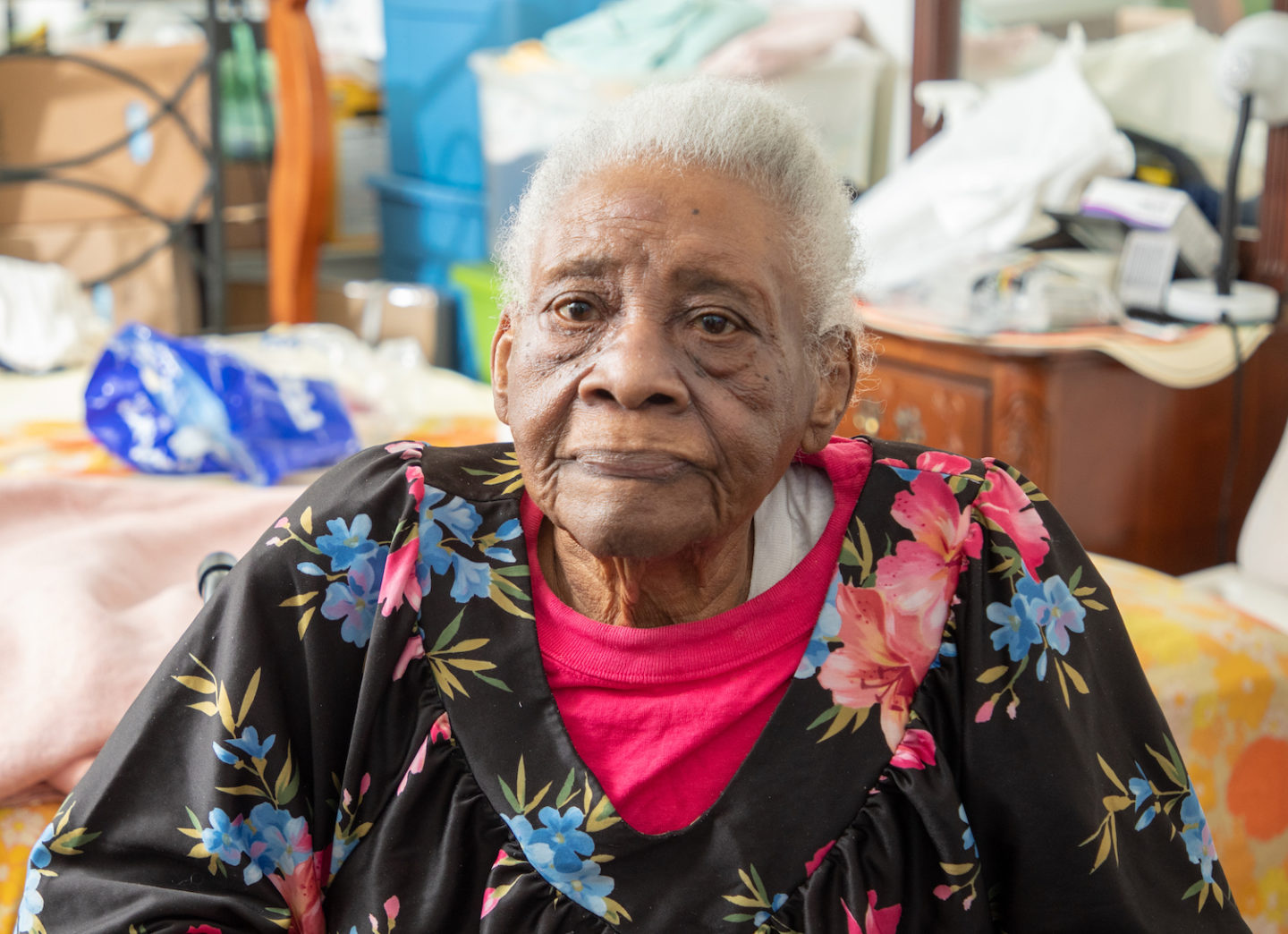Meet Meet the 12 Newest Graduates of VNS Health’s Process Improvement Course!

Last November, 12 VNS Health team members became the latest graduates of the organization’s Process Improvement Course (PIC) Series. This two-month, four-class course is facilitated by Adam Lefebvre, Director of Process Improvement. Since it began several years ago, the series has graduated 11 cohorts, each made up of team members from across VNS Health.

“Course participants learn the basics of Lean Six Sigma problem-solving methodology, and then apply it to a project within their work area,” explains Adam. “Best of all, they leave the program with the tools to lead further process improvement efforts across the organization.” (VNS Health also offers a six-month Lean Six Sigma certification program for team members, which you can read about here.)
“This course helped me to see the importance of reviewing our work more deeply and finding areas where waste can be reduced and processes can be made more seamless,” says recent PIC graduate Nicola Redway, Program Coordinator for Behavioral Health’s Health Home. “I would recommend this course for all people managers.”
“It has been a true pleasure to learn along with our latest course participants!” adds Adam. “Their dedication to their work and commitment to improving how we serve our patients, clients and members makes me proud to be a VNS Health team member. They’re all stars, and they are going to continue to do amazing work for the organization!”
Here are the latest PCI graduates and the improvement projects they worked on. Click on the links below to read more about four of these projects.
Kay Casanova, MSN, RN, CCM, Manager, MLTC Utilization Management: Decreasing MLTC UM decision turnaround times
Kimberly David, Associate Director, Delegated Vendor Operations: Improving productivity and engagement of Joint Operation Committee Meetings
Theresa Gormely, Care Management Support Coordinator, Care Management: Streamlining Care Management Support Coordinator summaries
Lydia Henry, Care Management Support Coordinator, Care Management: Level loading CMSC fax coverage
Melissa Henry, Director of Operations, Cultural Market Development: Standardizing Community Based Organization referral process among all VNS Health programs and services
Greg Horton, Business Manager, Center for Home Care Policy & Research: Improving the onboarding process and experience for new hires to the Research Center
Raheel Malik, Manager, IT Quality Assurance: Standardizing sign-off process for QA testing
Tamar McLaughlin, Clinical Evaluation Manager, MA Care Management: Reducing decision time for out of network outpatient Medicare UM reviews
Alice Rainford-Miller, Education Manager, Clinical: Increasing provider communication coordination notes among CHHA clinicians
Nicola Redway, Program Coordinator, Behavioral Health Health Home: Improving CAIRS (Child and Adult Integrated Reporting System) completion from 85% to 100%
Alan Rice, Population Health Specialist, Select Health: Reducing avoidable ED encounters for members enrolled in a Health Home
Amanda Zaragoza, Manager, Medicaid Operations: Improving the CHHA to LTC Referral Process

Project: Decreasing MLTC Utilization Management decision turnaround times
Lead: Kay Casanova, MSN, RN, CCM, Manager, MLTC Utilization Management

Background: On any given day, the VNS Health MLTC plan’s Utilization Management (UM) team has 700 to 800 pending requests that are handled by a team of 26 nurses. Through a recent process review, the team identified an area they’d like to improve upon: reducing the average time it takes to respond to a member’s request—which in turn should improve the experience for both plan member and providers.
Outcomes: Kay understood that any proposed improvement must be tested to understand its impact prior to implementation. She used the Plan, Do, Check, Act (PDCA) methodology to develop a two-week pilot in which five nurses were assigned to receive, review and request information on the same day for all incoming requests. PDCA is an iterative process that is first and foremost a learning tool. While this pilot requires adjustments and will not be implemented at this time, it was a huge success in that the team learned a great deal about actual volumes of requests as well as the amount of time an initial review requires. This will set them up for success as they continue to improve this process.
Key Learning from Kay: “This methodology helped me break down the UM process and easily identify pain points. I also learned that while we plan a new process with the best intentions, many factors need to be considered in order for the plan to be successful, and the plan will likely need several re-adjustments prior to being implemented.”

Project: Improving the onboarding process for new hires to the VNS Health Research Center
Lead: Greg Horton, Business Manager, VNS Health Center for Home Care Policy & Research
Background: Onboarding new staff to a department is critical to setting them up for success. When done well, onboarding is a driver of employee satisfaction and retention. This project’s aim was to embed value-added steps and standardize the onboarding process in the Research Center to ensure an optimal experience for new team members.

Outcomes: A key concept in Lean Six Sigma involves engaging throughout the problem-solving cycle with the people who actually do the work, in order to find root causes and solutions. By working with his team’s newest employee and gathering feedback from other team members, Greg identified multiple improvement opportunities with the Research Center onboarding process. He created and is currently refining a checklist to go over with each manager of a new hire as soon as a start date has been established, so that the process begins with clarity around everything the new hire needs and who they should meet with in their first week.
Key Learning from Greg: “Establishing a Current State Flowchart was invaluable in terms of actually seeing where our pain points and gaps were. It also helped us identify the things we want to do that currently don’t even have a place in the process. The creation of the flowchart also launched a brainstorming process in order to find solutions to identified waste areas.”

Project: Reduce avoidable emergency department encounters for members enrolled in a Health Home
Lead: Alan Rice, Population Health Specialist, Select Health

Background: Health Homes (HH) are contracted by VNS Health’s SelectHealth plan to provide intensive case management in the community to plan members enrolled in that HH. A core service that the HH delivers is follow up on any emergency department (ED) and hospitalization encounters. Increasing primary care physician (PCP) follow-up appointments within 10 days of hospital discharge has been shown to reduce the frequency of subsequent ED visits and avoidable readmissions. HHs can contribute to this reduction by successfully contacting their members following hospital discharge and assisting in making a follow-up appointment with their PCP. Not only does this have a financial impact, but it also positively impacts the member’s quality of life.
Outcomes: Alan had the added difficulty of partnering with external organizations on this project. He utilized a data-driven approach, has expertly used change management techniques to build relationships and influence his partners. He is now piloting interventions with the HH that has the largest volume of members and therefore the largest number of hospital alerts. Alan has been bringing greater awareness to the scope of this issue by holding in-service training sessions with the front-line care managers of the HH, in whichhe provides education on the data and best practices, and hears directly from them what their their pain points and difficulties are—enabling them to identify ways to address their barriers together. Because this project has a large scope, results of Alan’s interventions will be monitored into 2023 and successes will be shared with other Health Homes.
Key Learning from Alan: “Health Home care manager need to be educated about the importance of post-discharge follow up with their members—especially keeping their PCP appointment. HH care managers also need to understand the role the PCP’s office can play in helping the member meet this important measure. This project uncovered just the tip of the iceberg as far as what our members need. As we continue to focus on HH members who are high utilizers of medical care, we expect to discover many social determinants of needs, such as food insecurity, unstable housing, and dis-engagement from their PCP.”

Project: Improving the Referral Process from VNS Health Home Care to our MLTC Health Plan
Lead: Amanda Zaragoza, Manager, Medicaid Operations
Background: VNS Health Home Care social workers frequently refer potential members to our MLTC (Managed Long Term Care) Health plan. These referrals follow a multi-step process that includes outreach and education to assist the consumer with the enrollment process and associated assessment scheduling. Enhancing this process will enable the MLTC plan to enroll more members during each enrollment period, thereby helping VNS Health achieve its growth goals.

Outcomes: Amanda followed the gold-standard Lean Six Sigma approach of first understanding the current state of affairs by observing the existing process. She sat with multiple team members to learn how they work, understand their pain points, and solicit their improvement ideas. Together, she and the other team members hypothesized that changing how the call list is prioritized to the “first-in, first-out” method would reduce the amount of time the consumer is waiting to receive a call from us, which in turn would lead to more enrollments. With Amanda’s leadership, they tested this idea and saw an 80% increase in enrollments in November, from 12 to 22! As the team continues to employ this approach, referrals from Home Care to MLTC are expected to increase in the coming year.
Key Learning from Amanda: “I learned from this process that teams should work more closely together—especially if we have the same goals. We should take the time to listen and learn from each other and get a better sense of the work we each do, then use feedback from each other to make necessary improvements that lead to success.”